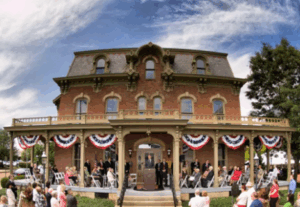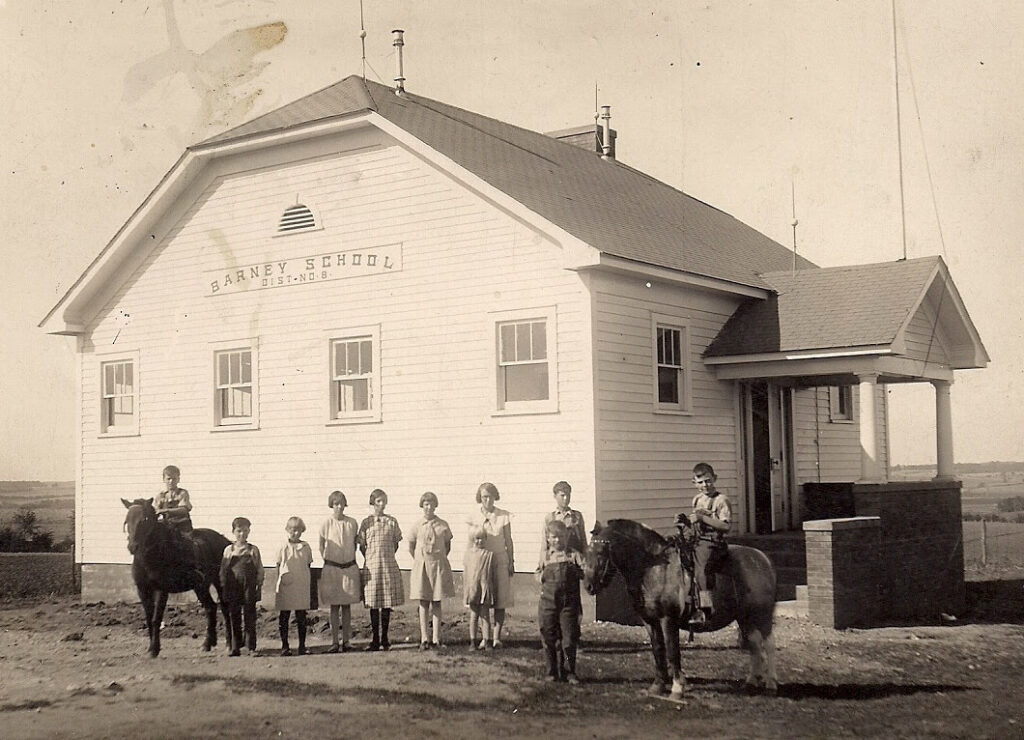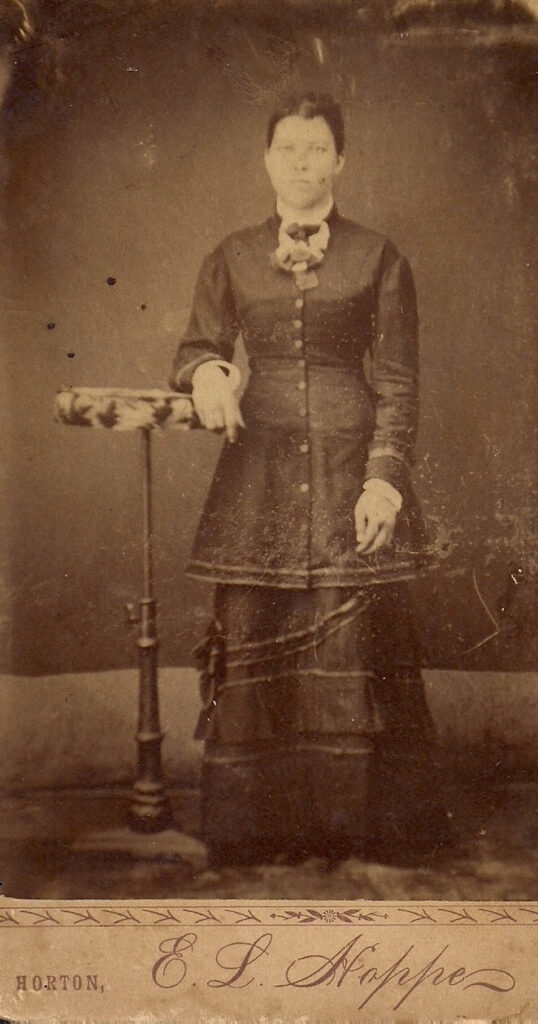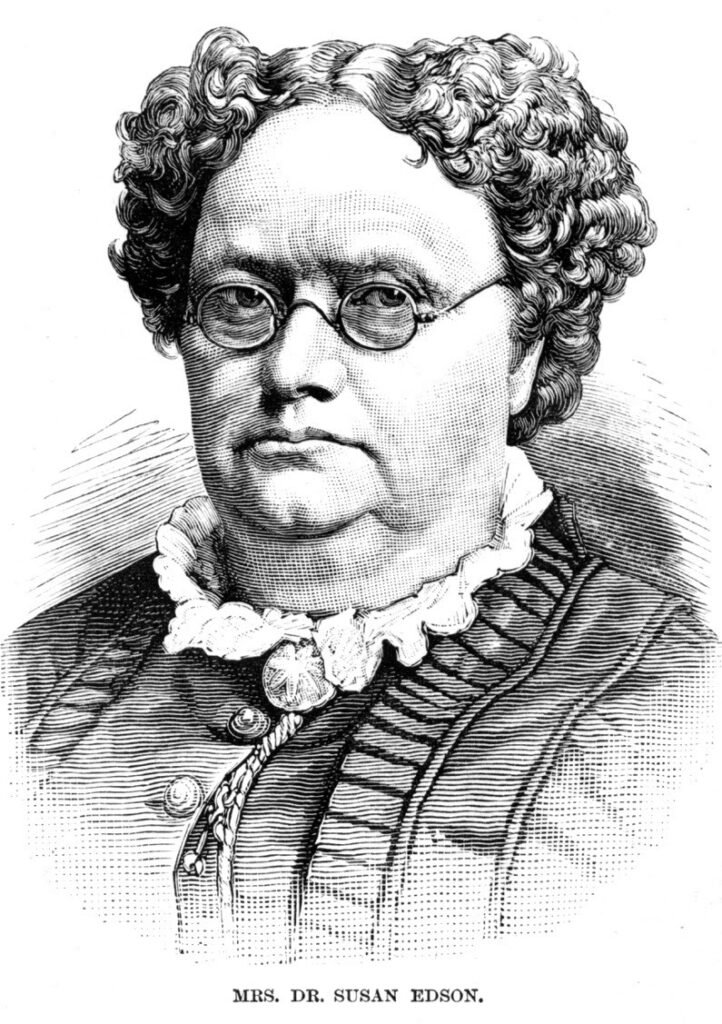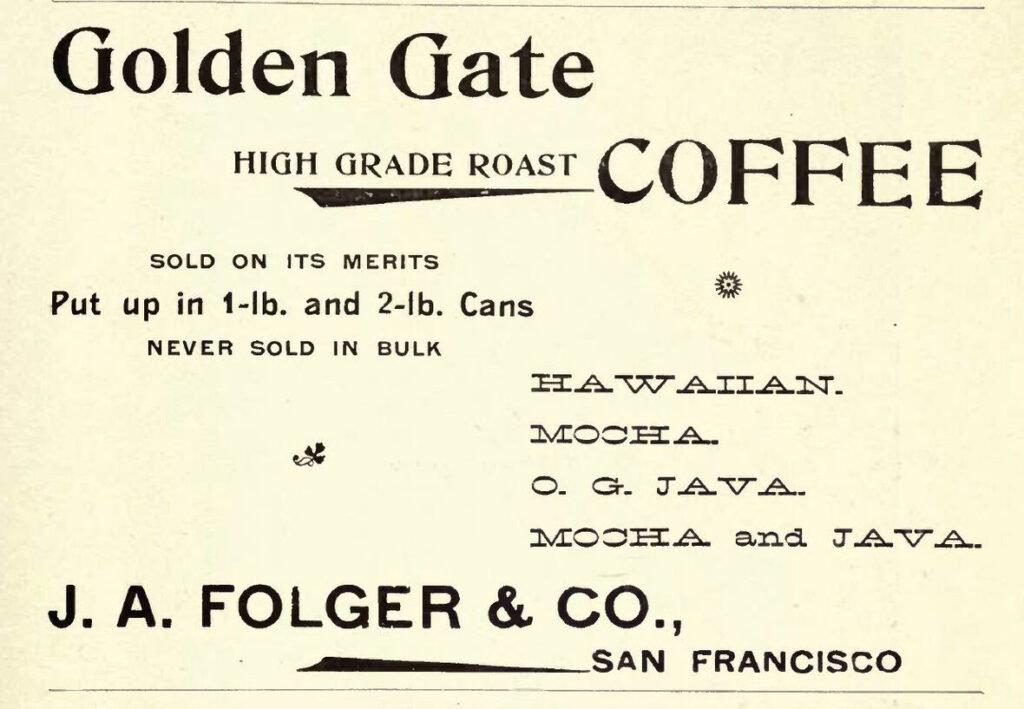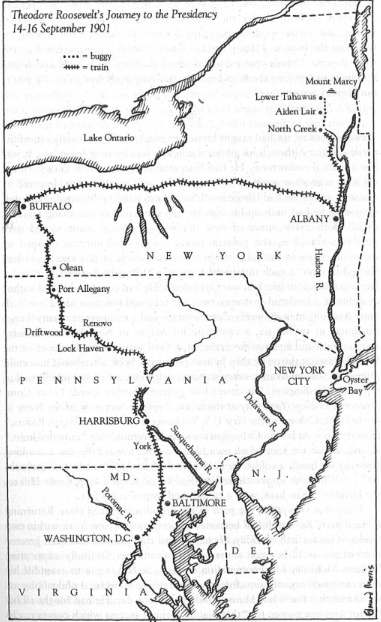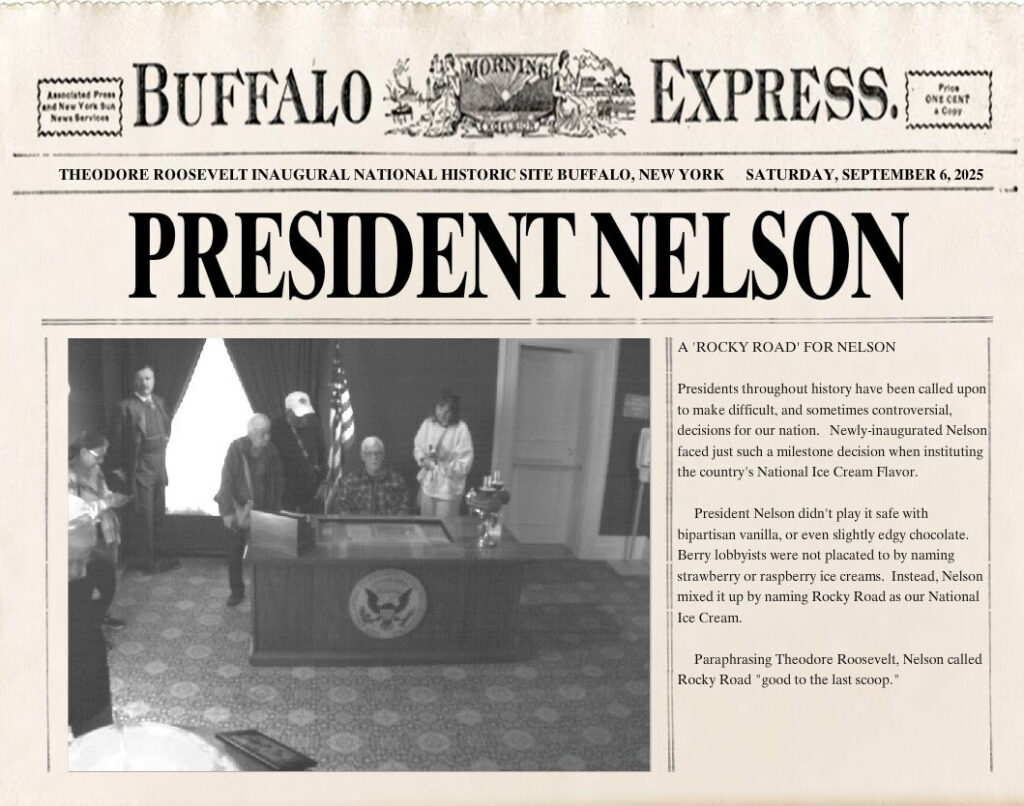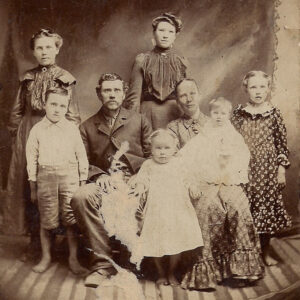
02 Oct ANCESTRY- Newsletter- September 20, 2025
Contents
- 1 ANCESTRY- THE FIRST LADIES AND ALL OF THE OTHER LADIES
- 2 ANCESTRY- THE SLIM SILVER LINING OF DISEASE
- 3 ANCESTRY- PRESIDENT’S PLACES
- 4 ANCESTRY- THE PRESIDENT’S LADY DOCTOR
- 5 ANCESTRY- THE NANTUCKET COFFEE WARS
- 6 ANCESTRY- CONFEDERATE PAYROLL FOR ENSLAVED LABOR
- 7 ANCESTRY- A ROCKY ROAD FOR TEDDY AND ME
- 8 ANCESTRY- PRESERVE YOUR FAMILY HISTORY, TODAY
 ANCESTRY- THE FIRST LADIES AND ALL OF THE OTHER LADIES
ANCESTRY- THE FIRST LADIES AND ALL OF THE OTHER LADIES
One of the questions that people ask when we’re building books is “What about grandma?” Where’s her page? The reality is, until the invention of family planning and birth control, most of our female ancestors were busy raising a herd of children, feeding everyone, tending to the time-consuming home, and helping with farm or ranch chores. Unfortunately, there was not a lot of public documentation about their independent activities, which may have occurred in their early or later lives.
Until the 1960s, most married women were referred to as Mrs. “So and So”, with reference to their husband’s first and last name. Since that time, many women have established significant roles outside of the home.
We were a bit underwhelmed when we visited the First Ladies National Historic Site in Canton, OH (pictured), which provides some hormonal balance to the city, given that the NFL Hall of Fame is located nearby. However, it’s there because of President William McKinley’s wife’s family; the Saxtons’ home is where the museum is located. The museum did a commendable job, given its limited resources, but most of the focus was on fashion, decorating, and entertaining. See the interesting article below on First Lady Lucretia Garfield
I think about my own grandmother’s career activity. One was a ranch wife, and an excellent seamstress in her golden years, supervising garment factories in Los Angeles. My other grandma graduated from the Iowa State Teachers’ College and taught school (pictured below with her 1928 class at Barney School (the lady furthest to the right) in Mercer County, IL. After marriage, she became a hardworking farm wife, but also supplemented the household income by working as a janitor at Cornell College, but not the one in Ithaca, the one in Mt. Vernon, IA,
 ANCESTRY- THE SLIM SILVER LINING OF DISEASE
ANCESTRY- THE SLIM SILVER LINING OF DISEASE
You don’t really think of towns prospering due to disease, but in the case of Saranac Lake, they can thank “TB” tuberculosis or what was known as in early years as consumption.
Considering TB killed 1 in 7 people at the height of the disease, my ancestors were not overly affected. I am guessing that’s because they lived a rural existence, away from crowds.
However, I did have a Great-Great Grandmother, Mary Rounds Van Vliet (the wife of Luther Van Vliet) {Luther Van Vliet](http://ttps://gem.godaddy.com/p/00425c1) who died from it at age 26. I also had a four-times great-grandmother, Jane Bowen, who died from it in 1858; her father had suffered from it for 15 years. Other than that, there were a couple of distant aunts and uncles. I don’t have anyone listed in my wife’s family who suffered from it.
Edward Livingston Trudeau (1848 –1915) was an American physician who established the Adirondack Cottage Sanitarium at Saranac Lake for the treatment of tuberculosis.
Dr. Trudeau also established the Saranac Laboratory for the Study of Tuberculosis, the first laboratory in the United States dedicated to the study of tuberculosis. He was a public health pioneer who helped to establish principles for disease prevention and control. Most of us would be unaware that he is the great-grandfather of Doonesbury cartoonist Garry Trudeau.
We visited his lab and learned of his approach to curing the disease. Many of the homes in Saranac Lake turned into boarding homes for the cured (two years or more without overt symptoms), as people came from far and wide to be cured by the air of the Adirondacks.
Here’s a picture of a 1921 home. The architecture is unique to Saranac Lake, NY, where folks cured of TB in cure cottages. This house was built for curing. The specific design for healing, such as medicine cabinets built in every bedroom and covered porches off every bedroom (so they could get fresh air all year, which was part of the cure). Below is a picture of people recovering on a “cure” porch.
 ANCESTRY- PRESIDENT’S PLACES
ANCESTRY- PRESIDENT’S PLACES
Another highlight of our visit to Buffalo was visiting the Millard Fillmore home in East Aurora (statue to the left). In our travels, I’ve made a deliberate attempt to visit presidential libraries, birthplaces, and homes.
So far, we’ve been to all or some of such places for all of the presidents except Zachary Taylor (all there is his mausoleum in Louisville), Chester Arthur (on a future trip to Canada, as his birthplace is near the border), Obama (haven’t been to Chicago since he completed his term, but we’ve been to Martha’s Vineyard), Biden and Trump.
Presidents like Washington, Jefferson, Lincoln, Grant, Teddy Roosevelt, Eisenhower, and LBJ all have three or more places to visit.
As an example, Teddy is honored at his birthplace in NYC (visiting next spring), his home in Sagamore Hill, the inaugural place, Mt. Rushmore, his namesake national park, and his new library in North Dakota (next fall). The curator at Sagamore Hill expressed concern that the North Dakota library would struggle to find noteworthy materials, given that Harvard (his alma mater) has a substantial collection of his papers and is unlikely to let go of them.
When I was starting to search for these types of places several years ago, I found the Millard Fillmore Presidential Library. However, upon further inspection, it turned out to be a bar in Cleveland. However, one of Millard Fillmore’s homes survives due to children’s toys, as the story below tells:
Margaret Evans, with her husband, Irving Price, Helen Schelle, and Herman Fisher, co-founded Fisher-Price Toys in 1930. Margaret Evans was a children’s book illustrator and artist. She became the first Art Director of Fisher-Price and designed push-pull toys for the opening line, based on characters from her children’s books.
Margaret Evans began her art career at an early age and sold her first illustrated story to the Boston Journal in 1900. She attended high school in Charlestown, Boston, and went on to study at the Massachusetts Normal Art School. From there, she went on to study at the Boston Academy of Fine Arts under the tutelage of Joseph DeCamp and Vesper George. Before she married Irving Price, Evans worked as a freelance artist in New York City, publishing with Rand McNally, Harper & Brothers, and Stecher Lithography [Rochester, NY]. After the formation of Fisher-Price, Margaret went on to exhibit her work in many galleries nationally. She was also published in Nature Magazine, the Women’s Home Companion, and Pictorial Review.
After the Millard Fillmore family moved to Buffalo in 1930, their home had multiple owners and multiple additions made to it. In 1915, it was moved further back on its original lot to make room for a theater. At that site, it was abandoned and fell into decay until 1930, when Margaret and Irving Price rescued it. They relocated the original core of the building to its current location and oversaw its restoration, which would serve as a home and artist’s studio for Margaret. It was acquired by the Aurora Historical Society in 1975 and restored in appearance to the period of Fillmore’s ownership.
Fillmore is one of the ten presidents who have no living descendants, including Washington, Madison, Jackson, Polk, Buchanan, Pierce, Lincoln, Arthur, and McKinley.
Even more rare, he is one of five presidents whose father, Nathaniel Fillmore, lived to see them become president. The others are John Adams (father of John Quincy Adams), Jesse Root Grant (father of Ulysses S. Grant), George Tryon Harding (father of Warren G. Harding), and John Calvin Coolidge (father of Calvin Coolidge).
 ANCESTRY- THE PRESIDENT’S LADY DOCTOR
ANCESTRY- THE PRESIDENT’S LADY DOCTOR
One interesting story from the First Ladies Museum was learning that the widowed Lucretia Garfield, stood up for the fair treatment of Dr. Susan Edson, President Garfield’s physician for her services in caring for the president between his assassination and his death.
Susan Ann Edson was born January 4, 1823, in Fleming, New York.[5] She was the daughter of John Joy Edson and Sarah E. Barnes.
Susan Ann Edson graduated from two colleges, Eclectic College of Cincinnati in 1853, and Cleveland Homeopathic College in 1854. She was one of the first women to attend medical school. Accounts suggest she may have been the seventh woman in the United States to receive a medical degree.
After graduation, Dr. Edson opened a practice. When the American Civil War began, Edson joined the nursing corps, together with her sisters. She served in Washington, D.C. and also at Fort Monroe, a small Union outpost surrounded by Confederate territory. Dr. Edson also served during the war at the Union Hotel Hospital in Winchester, Virginia. Edson improved sanitation and reduced the mortality rate significantly at the hospital.
Immediately after the war, Dr. Edson returned to her home in upstate New York and maintained a practice there. On May 23, 1872, she returned to Washington, D.C., where she remained for the rest of her life. In Washington, she ran a large practice, and it was said that she made so many house visits that she “wore out more horses and carriages than any other doctor in town.” Edson specialized in treating illnesses of women.
Among Dr. Edson’s patients in Washington was Neddy Garfield, son of then-Congressman James A. Garfield, who had fallen seriously ill. James and Lucretia Garfield grew close to Dr. Edson during this time and shared their grief with her after Neddy’s death.
Their professional relationship continued after Garfield’s election as president in 1880. Lucretia was frail and required frequent medical attention. Edson became a familiar presence in the White House, as she cared for the First Lady during a bout of malaria in May 1881.
Just months later, in July 1881, President Garfield was shot by assassin Charles J. Guiteau. A team of physicians was called to help the president, led by Doctor Willard Bliss. Also called into assistance were Dr. Edson and a cousin of Garfield’s, Dr. Silas A. Boynton. Edson was by Garfield’s side more than any other physician with encouragement from Lucretia and the children who referred to Edson as, “Dr. Edson, full of Med’cin!” Although Lucretia insisted that Edson be by Garfield’s side, Edson was limited by Bliss. Within a three-month period of medical treatment to Garfield, Bliss reportedly did not take Edson’s advice one time. Included in this advice was both Edson’s and Boynton’s opinions on the improper treatment of Garfield in regard to his preexisting conditions. Both Edson and Boynton, from being close with Garfield, had knowledge about his previous stomach complications which were blatantly ignored by Bliss, causing further risk to Garfield and a continuation of treatment methods that were considered more dangerous given the President’s state. As Garfield’s state was worsening and Bliss repeatedly resorted to inefficient treatment and held a constant dismissive attitude towards Edson, Edson left Elberon, New Jersey. The remaining physicians, including Boynton and Bliss, worked with Garfield until his eventual death in September 1881.
Following Garfield’s’ death, the team of physicians, including Edson, Boynton, and Bliss, sent in a compensation demand to Congress for their medical services to the President. Edson and Boynton were able to receive portions of the distribution at Mrs. Garfield’s request. Initially, Bliss demanded $25,000, Edson $10,000, and Boynton $4,500. Due to Bliss’s controversial treatment of the President, Congress disapproved the demand, resulting in Bliss receiving only $6,500 and Edson receiving only $3,000. For the same services, the six male physicians that worked alongside Edson all received, with the exception of Boynton, over double what Edson received, which Lucretia Garfield appealed without success.
 ANCESTRY- THE NANTUCKET COFFEE WARS
ANCESTRY- THE NANTUCKET COFFEE WARS
In September 2023, I wrote an article in jest about Folgers and Starbucks having merged. The article was based on the marriage of Mary Starbuck and Jethro Folger on Nantucket Island. Here’s more on how Nantucket contributed to the two giant coffee companies.
Here is Folger’s Nantucket origins- The precursor of the Folger Coffee Company was founded in 1850 in San Francisco, California, as the Pioneer Steam Coffee and Spice Mills. Prior to that Californians had to purchase green coffee beans and roast and grind them on their own. The mill’s founding owner, William H. Bovee, saw the opportunity to produce roasted and ground coffee ready for brewing. Bovee hired newly arrived 15 year old carpenter J. A. Folger to help build his mill. Folger had come from Nantucket Island with his two older brothers during the California Gold Rush. In the 1850s, kerosene became a cheaper alternative to whale oil, Nantucket’s dominant business. Many Nantucket ships were re-purposed to instead bring coffee from South America to San Francisco. After working at Bovee’s mill for nearly a year, Folger had saved enough money to buy part of the company, and went to mine for gold. He agreed to carry samples of coffee and spices, taking orders from grocery stores along the way. Upon his return to San Francisco in 1865, Folger became a full partner at Pioneer Steam Coffee and Spice Mills. In 1872, he bought out the other partners and renamed the company J.A. Folger & Co.
Here is Starbuck’s Nantucket origins- Herman Melville spent some time in Nantucket, where the Starbuck name is common, as Edward Starbuck was a proprietor (founder) of the island.
Melville named a character in Moby Dick, Starbuck. He is the scrupulous, rational first mate of the whaling ship Pequod . A devout Quaker, Starbuck serves as a moral counterpoint to the obsessive and vengeful Captain Ahab, often questioning the madness of the quest for Moby Dick and the pursuit of a creature with malicious intent. Despite his caution and objections, Starbuck’s loyalty and adherence to the ship’s command ultimately led to his death, a victim of Ahab’s monomania.
Here is an excerpt on the founding of Starbucks the coffee chain- Starbucks originally opened in Seattle, Washington, on March 30, 1971. It was founded by business partners Jerry Baldwin, Zev Siegl and Gordon Bowker who first met as students at the University of San Francisco. The trio were inspired to sell high-quality coffee beans and equipment by coffee roasting entrepreneur Alfred Peet. Bowker recalls that a business partner of his, Terry Heckler, thought words beginning with the letters “st” were powerful, leading the founders to create a list of words beginning with “st”, hoping to find a brand name. They chose “Starbo”, a misreading of the mining town Storbo in the Cascade Range named after Peter Storbo, founder and president of the Mount Rainier Mining Company. From there, the group remembered “Starbuck”, the name of the chief mate in the book Moby-Dick. Bowker said, “Moby-Dick didn’t have anything to do with Starbucks directly; it was only coincidental that the sound seemed to make sense.”
 ANCESTRY- CONFEDERATE PAYROLL FOR ENSLAVED LABOR
ANCESTRY- CONFEDERATE PAYROLL FOR ENSLAVED LABOR
I came across this link courtesy of https://civilwarrecords.com/ to Confederate records with names of presumable slaveholders who were paid for providing slave labor to the Confederacy.
Confederate Quartermaster and Corps of Engineer Payrolls for Enslaved Labor
The example below helps people looking for their enslaved ancestors who had a connection to both the slaveowner and the slave, especially if their ancestor had a rare name like Hordy, Littleton, Riddick, Miol, Maclin, or Goodwin.
This payroll acknowledges that C. H. Dimmock, Captain, Corps of Engineers, paid certain persons from Greensville County, Virginia, for work performed by enslaved persons at the defenses of Petersburg, Virginia, during August 1862.
John R. Bendall provided enslaved men named William and Matthew.
Ann H. Batt provided enslaved men named Hordy and Sam.
B. A. Bailey provided enslaved men named Alex, Littleton, and Jesse.
J. R. Chambless Sr. provided enslaved men named John and Smith.
J. R. Chambless Jr. provided enslaved men named Riddick and Nick.
James W. Cook provided enslaved men named Miol, Tom, Abraham, Buck, Wiley, Edwin, Bell, Maclin, and Goodwin.
John H. Weaver acknowledged receipt of payment for both J. R. Chambless Sr. and Jr., and for James W. Cook. The other slave owners were not paid from this payroll.
 ANCESTRY- A ROCKY ROAD FOR TEDDY AND ME
ANCESTRY- A ROCKY ROAD FOR TEDDY AND ME
We visited Teddy Roosevelt’s inauguration site in Buffalo, NY. Once TR got word of McKinley’s assassination, he headed to Buffalo. Once there, early indications were that McKinley would most likely survive, so he proceeded to join his family on vacation in Vermont and arranged for a party to climb Mt. Marcy, the highest point in New York.
Upon McKinley taking a turn for the worse, all measures were taken to retrieve the Vice President. The linked story describes those extraordinary efforts and his incredible return journey to Buffalo (map of his journey to the left). Rough and ready journey
One of the tourists’ diversions was to sit at the presidential desk and have their picture taken for a headline. So, below you can see lobbyists for the various ice cream flavors having descended upon my office. Clearly, my very short-term goal was accomplished, as through my influence, the Girl Scouts added the rocky road-flavored cookie that I had endorsed.
 ANCESTRY- PRESERVE YOUR FAMILY HISTORY, TODAY
ANCESTRY- PRESERVE YOUR FAMILY HISTORY, TODAY
Reach out to Dancestors Genealogy. Our genealogists will research, discover, and preserve your family history. No one is getting any younger, and stories disappear from memory every year, eventually fading from our ability to find them.
Preserve your legacy and the heritage of your ancestors.
Paper gets thrown in the trash; books survive!
Ready to embark on your family history journey? Don’t hesitate. Call Dan Nelson and get your project started!


